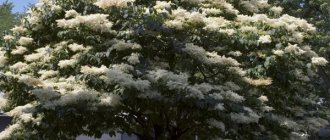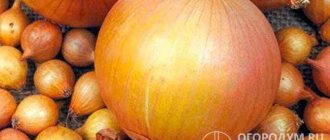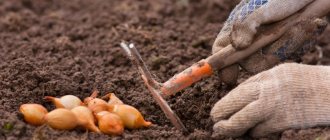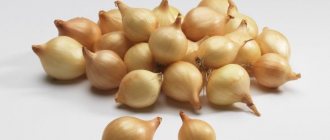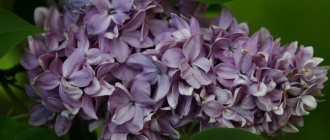Lagerstroemia (lat. Lagerstroemia) is a genus that unites about 25 species of beautifully flowering flowering shrubs and trees. In Russia, the plant is better known as “Indian lilac,” although in fact it is only one of the varieties of lagerstroemia. With its magnificent flowering, Lagerstroemia attracts both gardeners and home flora lovers.
The southern beauty received such an unusual name in honor of the merchant Magnus von Lagerström, who gave unusual seedlings to the governors of Mediterranean cities. The homeland of these plants from the Derbennikov family (lat. Lythraceae) is China, but they spread from India - this explains their second name. In nature, it is often found in Asian countries and Australia.
As an ornamental garden crop, lagerstroemia is grown in the Mediterranean and in the southern regions of Ukraine and Russia. Indoor lagerstroemia has spread throughout the world.
[!] Gardeners in central Russia are also trying to grow lagerstroemia, providing the plant with a warm winter indoors.
In a natural environment, the height of trees can reach ten meters; in an apartment, the height of Indian lilacs is about a meter. The plant has short-petioled oval leaves of a dark green color; in the fall they turn yellow and red and fall off. The first buds appear in early January.
Abundant flowering of both indoor and garden lagerstroemia is observed from July to the end of October, subject to favorable conditions. The flowers appear from round buds that resemble berries. Racemose inflorescences with wavy petals and long stamens can change their color as the plant grows and during the day; flowers of different shades can often be found on the same plant. The color palette of inflorescences is very diverse and includes all shades from dark purple to white.
Botanical description and homeland of the plant
Lagerstroemia (lat. Lagerstroemia) is a genus of shrubs and small trees with colorful lush flowering.
In everyday life of Russian gardeners it is known as Indian lilac, but this is actually only one of the 25 existing types of lagerstroemia. The charming southern beauty received her name in honor of the German merchant Magnus von Lagerström. He gave away plant seedlings to the governors of Mediterranean cities. Lagerstroemia originally came from China, however, it began to spread from India, and is also found in nature in Asia and mainland Australia.
As an ornamental garden plant, Indian lilac is successfully grown in the Mediterranean, the southern part of Ukraine, Belarus, and Russia. Popular all over the world as a houseplant. Flower growers in the middle zone have gotten used to cultivating Lagerstroemia in flowerpots at home; in the summer the bush moves to the garden, and winters again in a warm room.
Let's get acquainted with the appearance of Lagerstroemia from the Derbennikov family. Under natural conditions, trees can grow to a height of 10 m, but indoor varieties are limited to a height of 1-1.5 meters. The leaves are elongated-oval, short-petioled, dark green in color with a shiny surface, located oppositely on the shoots. With the onset of autumn they turn yellow or red and fall off by winter. In warm weather, the first buds will appear in January.
When does Lagersthemia bloom?
At home and in the garden, subject to proper maintenance conditions, Lagerstroemia blooms for a long time: from July to the end of October. Closed, round buds of a green hue are more reminiscent of berries. When the flowers with petals wavy at the edges bloom, the racemose inflorescences will become lush. The color range is from white to lilac and red. It is interesting that flowers of different colors open simultaneously on one bush. The fruits look like segmented capsules with seeds.
Rules of care
Regarding the general rules of care: lighting for lagerstroemia needs to be bright and diffused, keeping it warm all year round, regular watering and fertilizing are important. To maintain a neat shape and neat appearance, annual spring pruning will be required.
Indian lilac is susceptible to improper conditions and flowering may be short-lived or sparse. The beauty of inflorescences is affected by lighting and pruning. Indoor plants are more resistant to diseases and pests, and relative to garden plants, preventive spraying is carried out.
Description of flowers
The buds look like dense balls with short petioles. They begin to bloom from the bottom, widest part. Each color has several petals, their edges have a wavy shape. When the buds open, they resemble miniature double roses with bright yellow stamens in the middle. Flowers come in white, red, pink, and crimson shades. Lush flowering amazes with its splendor. At this time, Lagerstroemia, Indian lilac (see photo below), is a very attractive plant for insects, thanks to which the plant pollinates and produces seeds suitable for germination. Lilac has an interesting feature. Racemose inflorescences can change color not only during growth, but also throughout the day. Their color also depends on the lighting. Very often flowers of different shades grow on one bush or tree.
Growing lagerstroemia from seeds at home
Lagerstroemia seeds photo
When cross-pollinated, the varietal differences between plants are lost, so it is better to purchase seeds for sowing at specialized sales points. We begin the sowing procedure in the spring in March .
Prepare a wide container or cassette box. Use universal soil for growing seedlings. Pour it into a container, moisten it and sow the seeds, planting them to a depth of 1-2 cm. Cover tightly with a piece of glass or transparent film.
Lagerstroemia from seeds photo shoots
- Keep the lighting bright and diffused; the temperature is required at 24 °C.
- Crops should be ventilated daily to prevent them from becoming moldy; if necessary, moisten the soil surface by spraying with a fine spray.
- Sprouts will begin to appear after 2-4 weeks.
- We get rid of the shelter and water it moderately.
- After unfolding, a pair of true leaves are transplanted into separate, preferably peat pots for more convenient transfer to open ground or a flowerpot.
- Try not to damage the roots, carefully pry the seedling with a spatula and transfer it to the pot.
Further care is simple: provide good lighting with long daylight hours and room temperature. If the air is dry, take care to spray the leaves or install a humidifier nearby.
Lagerstroemia in open ground: planting and care
Lagerstroemia in the urban landscape photo
Choose a place in an open sunny place. In an area where other plants suffer from the heat, lagestremia feels excellent. In active sun the bush blooms more luxuriantly.
The soil required is moderately nutritious and loose.
Grows best in moderately moist, well-drained soils in full sun. Does well on loamy, clayey soils with good drainage. Prefers slow release fertilizer conditions. Dense black soils are not suitable for this beauty. It is advisable to plant on cultivated garden soil with the addition of coarse sand. Overly fertile soils tend to produce lush foliage at the expense of flowering, and the plant is more susceptible to winter injury. Does not tolerate flooding and stagnant water.
Plant in sheltered areas and apply winter mulch. The above-ground parts of young plants often die off in winter, especially when temperatures drop below -15 degrees Celsius. The plant's winter hardiness zone is 5 (frosts down to -26, -28°C), but plants do not always withstand such frosts. In zone 6a, some gardeners prefer to grow these plants in much the same way as buddleias, cutting all stems back to 20cm in early spring each year. The roots push out new stems, which usually grow 0.6-1.2 m (sometimes more) by the end of the growing season. Flowers are produced on a new tree no worse than on old branches.
Indian lilac as an ornamental shrub photo
You can grow these plants as woody shrubs by pruning them back to living wood in the spring when new foliage begins to emerge (much like some bush roses). If provided with cover, the tree will survive some winters, but can still be seriously injured or die at the top during severe winters.
Diseases and pests
The two main diseases of Indian lilac are fungal leaf spot and powdery mildew. Foliage may turn yellow (chlorosis) in alkaline soils. There is some susceptibility to aphids. Winter injury, especially to the growing tips, is common in USDA hardiness zones 5 and 6.
Benefits of the plant
Key benefits include a long flowering period, peeling bark and excellent fall color. At the end of summer (sometimes before frost), terminal, fastened inflorescences (up to 0.3-0.5 m long) of spectacular flowers with twisted petals bloom on vertical branches. In the wild, the flowers are usually pink to red. Cultivated varieties have expanded the flower color range to include white, pink, mauve, lavender and violet. The leaves are alternate to opposite, thick and leathery, elliptical to oblong leaves (up to 7 cm long) often turning light green tinged with red, becoming mature dark green by summer and finally turning attractive shades of yellow-orange-orange . red in autumn.
The flowers give way to round seed capsules, which often persist through the winter. The smooth, pale pinkish-gray bark on mature branches peels off with age. Where winter injury may be a problem, the plants typically grow to 1.2m tall. In the deep south, plants will grow much taller if not pruned in the spring. Common types of plants are not sold. Over the years, many varieties have been introduced from dwarf to tree-sized varieties, many of which are hybrids between the species L. indica and L. faueri.
Plant characteristics and distribution
Lagerstroemia or lagerstroemia is a very beautiful flowering plant with a rather capricious character. Its homeland is China and India, where it is considered a “divine flower”. Under natural conditions, it can be found in Korea, Australia, the Mediterranean, America, the Philippines, and the Black Sea coast.
Lagerstroemia - a beautiful flowering plant
In nature, lagerstroemia grows as a deciduous shrub or tree, the height of which reaches 6–7 m, and the width of the crown is 8 m. When grown at home as a houseplant, it does not exceed 1 m in height.
Shrub forms produce many light brown shoots; the trunk is thin, single, covered with smooth silver-gray bark. The leaves are dark green, depending on the type, reach a length of 2 to 7 cm, elliptical in shape with an elongated pointed tip. In autumn they turn yellow or red.
But the flowers are of particular interest. They are small - 2.5 cm in diameter, collected in 40-centimeter paniculate inflorescences - racemes. Each flower emerges from a bud that resembles a round berry. The color palette is varied, only yellow, blue and orange tones are missing. The most common flowers are white, pink, crimson, red and purple.
The edge of the petals is wavy or fringed. One inflorescence may contain flowers of different shades. Flowering is long - begins in June and ends in mid-October.
Wintering of Indian lilac
Proper winterization is extremely important. It all depends on the growing method. If lagestremia is cultivated in a tub, after the leaves turn yellow and fall off, it is brought into a room with an air temperature of 5-10 ° C with a plus sign. The basement is suitable. Water about once a month. At the beginning of March, bring it into a warmer room and prune it.
Move to fresh air with the onset of April days. If a bush/tree is grown in open ground, before winter it is pruned, hilled, the soil is mulched with sawdust and covered with spruce branches. In the garden, the plant comes to life later than the others, and this phenomenon causes concern among novice gardeners. As soon as the soil warms up well, the Indian lilac will begin to grow.
Reproduction
For propagation, cuttings that are slightly woody are used. They are cut off from the tops. They are planted in a peat mixture with sand and treated with root growth stimulants before planting. After 3 weeks you can expect rooting. The second propagation option is by seeds. Small grains are sown on the ground, lightly sprinkled with earth, and sprayed with a spray bottle. Then they need to be covered with plastic film to create a special microclimate. To grow, the container must be placed in a warm place. For rapid growth, bright lighting is necessary. After 3 weeks, sprouts will appear, at which point you can remove the film. After the adaptation period, the sprouts are planted in separate pots. Surprisingly, the plant will begin to bloom the next year. You should only take care of good lighting. The sowing period begins in March and ends at the end of June. The plant can be propagated in the garden in open ground.
Bushes are replanted using the transshipment method. Sometimes once a year, sometimes less. It all depends on the degree to which the pot is filled with root mass.
Lagerstroemia at home: cultivation and care
Lagerstroemia at home photo
Lighting and temperature conditions
To place Lagerstroemia, choose a place near a window facing southeast or southwest. It is bright diffused light that promotes active growth and regular flowering. Even direct sunlight is not scary, but you should get used to it gradually. In the shade, the shoots stretch in search of light and you should not expect lush caps of inflorescences.
The frost resistance of Lagerstroemia is low. The plant in the tub will withstand temperatures as low as -5 °C. Garden ones become hardened and tolerate short-term frosts down to -10 °C. During the period of active growth and development, moderately warm content in the temperature range of 18-24 °C is required. For winter holidays, the optimal temperature is within 10-12 °C. In this case, a winter garden, glazed balcony, loggia or veranda would be a suitable place to keep it. During a warm winter, the plant looks weakened and may not bloom at all.
Watering and air humidity
One of the key rules of care is regular watering without drying out the soil and stagnating moisture. During the period of active growth, the top layer of the substrate should be constantly slightly moist. When the earthen clod dries out, first the buds fall off, then the leaves. No less dangerous is waterlogging, which leads to the development of fungal diseases. From spring to mid-autumn, water about every other day; in extreme heat, supplement the procedure by spraying the leaves with a fine spray. With the end of flowering, less and less water will need to be added.
In winter, it is enough to moisten the substrate extremely rarely. Bring the pot with the plant into a warm room, water it and after a few hours return it to a cool place. For spraying and watering, in any case, it is necessary to use high-quality water without foreign impurities. First, it is left to settle for 1-2 days or filtered, you can take rain or melted water, and be sure to bring the temperature to room temperature.
Air humidity indicators for Indian lilacs during the growing season must be maintained at 55-60%. To do this, spray the bush with water on the leaves from a fine sprayer, preferably in the morning or evening hours (water combined with direct sunlight can cause burns to the leaves). From time to time, place the pot on a tray with damp expanded clay, moss, and pebbles.
How to feed
If there is a lack of essential microelements in the soil, the development of new shoots slows down and the appearance of the inflorescences deteriorates. Thus, indoor lagerstroemia is fed with complex mineral fertilizers in liquid form during the period of active growth. In the spring, it is necessary to apply fertilizing with a high nitrogen content; during the formation of buds and flowering, focus on the proportion of potassium and phosphorus. The frequency of feeding is 15 days. “Pamper” your garden plant with fertilizers according to a similar scheme; you can use organic matter.
Pruning and crown formation
Lagerstroemia bonsai photo
This procedure is simply necessary for the plant. Indian lilac grows quickly, branches actively and, with free development, will reach large sizes and stop blooming (inflorescences appear more on new shoots). When you reach the age of 1-2 years, start trimming Lagerstroemia. The best period is considered to be autumn after the end of flowering. It is possible to shorten the shoots in early spring before active sap flow begins; it is important to do so before the end of March, because flower buds are already being formed at the tops of the shoots. Cut 20-30 cm at a time, leaving a third of the length.
Broken, elongated, painful shoots, as well as branches growing inward, are subject to mandatory pruning.
If desired, do some formative pruning. To get a single-stemmed tree, you need to leave one powerful shoot growing from the root, and remove the rest. To create a shrub, we leave a few good root shoots. Lagerstroemia is excellent in bonsai. To bend the branches in the desired direction, wrap them spirally with thick wire and give them the desired shape. Over time, the trunk and branches become woody, and the auxiliary means are removed. The result is a bare, twisting stem with a lush flowering top.
Lighting
It is better to place the flower in a well-lit place. A window sill or loggia on the southeast or southwest side is ideal for this. The plant is not afraid of direct rays of the sun; on the contrary, it blooms better in bright light. If it grows in the shade, the shoots will stretch out and there will be no lush flowering. But in winter, during the dormant period, the plant needs light shading. A young bush or tree is sometimes left in an apartment for the winter, placing the plant next to the window, but on condition that the temperature is lower than in the entire room.
Transplanting Indian lilac at home
Lagerstroemia transplantation is painful; the most gentle way is to transfer it along with a lump of earth. The root system develops slowly, so we carry out the procedure no more than every 2-3 years. In the year when replanting is not carried out, it is advisable to replace the top layer of soil in the pot with a new one.
In a large pot, Lagerstroemia will take a long time to grow rhizomes and green mass, but will not bloom soon. Initially, we choose a flower pot that is slightly larger than the root system of the seedling; keep in mind that the roots grow deeper. Each time we increase the volume of the container by 2-3 cm.
It is advisable to replant in the spring before the period of active growth begins. As a last resort, replant the blooming lagerstroemia.
A prerequisite is to lay drainage at the bottom. A layer of pebbles, expanded clay, small pebbles, and broken bricks should occupy ¼ of the total volume of the pot to avoid stagnation of moisture and further rotting. The substrate must meet such characteristics as friability, water and breathability. It is convenient to use a purchased universal soil for flowering plants. There is nothing complicated about preparing your own soil mixture. You will need to mix turf soil, leaf humus, peat and coarse sand in equal proportions.
How lagerstemia overwinters in a tub video:
Trimming
The tree grows quickly, and inflorescences appear only on young branches. Therefore, pruning is done every year in the fall. The shoots are cut to 20–30 cm. If the plant is a tree, one developed shoot from the root is left, the others are removed. If a shrub is formed, there are several main shoots. Damaged, broken off, growing inward and thickening the crown are also removed.
Soil and fertilizing. Grows well in store-bought, all-purpose potting mix for flowering plants. The drainage layer is a quarter of the total volume. It is possible to create the soil for planting yourself - equal proportions: sand, turf and deciduous soil. The substrate must be loose - this is important! Fertilizers are applied during the period when the plant blooms. In the spring, liquid complex fertilizer and fertilizing are applied.
Transfer. On average, the plant is moved to another container in the spring every 2 to 3 years. The container for transplantation should not be too large, but high enough. A gentle way is to reload or renew the top layer of soil (it does not tolerate the procedure well).
Reproduction of lagerstroemia by cuttings and root shoots
To grow a new Indian lilac bush or tree, cuttings should be taken in the spring. Cut them 10-15 cm long from semi-lignified shoots. Treat with a solution of a growth stimulator (Epin, Kornevin, etc.). If there is a lot of planting material, plant for rooting in a common container with a sand-peat mixture, cover with transparent glass or a bag.
How to take cuttings from Indian lilac photo
If there are 1-2 cuttings, they are individually covered with a cut plastic bottle or glass jar. It will require warmth, bright diffused lighting, moderate watering and periodic ventilation. Roots will appear after 20 days, as evidenced by increased growth. Then we plant them for individual growth.
Reproduction of lagerstroemia by cuttings photo
Lagerstroemia produces side shoots like lilacs. In the spring, carefully dig them up and plant them as independent plants.
Lagerstroemia indica: propagation by seeds and cuttings
Like other ornamental plants, Indian lilac can be propagated by seed and vegetative methods.
In autumn or spring, at an air temperature of + 10-13 degrees, seeds are sown in greenhouses or seedling containers. They are scattered over the surface, sprinkled with wet sifted sand on top. When two true leaves form, the sprouts are carefully planted into separate pots. They are planted in a permanent place from April to June. Bushes grown in this way bloom 1-2 years after planting.
For cuttings, semi-lignified or fully hardened shoots are taken. In the first case, in July or August, a branch 5-8 cm long is cut off and placed in a greenhouse with a peat-sand substrate. From completely lignified branches, 4 cm sections are taken in winter and “planted” in a nutrient mixture for root formation. In both options, young seedlings are planted in the spring or at the very beginning of summer.
Lagerstroemia can decorate any area. Long flowering, bright lush buds enliven the picture and create a wonderful mood.
Diseases and pests of lagerstroemia
If proper care is provided from diseases and pests, lagerstroemia does not suffer. Providing her with the necessary conditions is not so easy; Indian lilac will react instantly to poor care. It all depends on the knowledge and skills of the florist. Even during the dormant period, the flower needs to be observed. Improper wintering, poor lighting and watering, lack of pruning will make the bush weak and will not flower.
Let's talk in more detail about the difficulties of growing:
- Potted lagerstroemia often suffers from powdery mildew when overwatered. If a grayish coating is detected, immediately dry the substrate and treat the plant with a suitable fungicide. Prevention is proper watering, the presence of drainage and a loose substrate;
- Outdoors, Indian lilacs can be attacked by aphids. We get rid of its accumulations on leaves and young shoots using insecticidal preparations;
- If flowering is sparse, the reasons lie in insufficient lighting, incorrect temperature conditions, and lack of a dormant period;
- If pruned incorrectly, lagerstroemia does not bloom;
- Lagerstroemia shoots stretch when there is a lack of nutrients or poor lighting;
- Flowers and leaves fall off when the earthen clod dries out;
- The plant died. Lagerstroemia suffered from improper watering (overmoistening or drying out), and exposure to low temperatures also has a disastrous outcome.
Lagerstroemia indica: use in room decor
The beauty of blooming lagerstroemia will blend harmoniously with any interior.
In the summer, it can be placed on a balcony or terrace, where it will bloom and develop more intensively. With the help of decorative pruning, the crown of a flower can be given different shapes, which will decorate the room even without blooming buds.
Lagerstroemia in landscape design
Indian lilac bushes and trees look great in solo plantings. They will be kept company by other flowering shrubs, ferns, conifers, and cereals.
Lagerstroemia as a landscape decoration photo
This beauty really looks like a lilac, only it blooms not in spring, but in summer, which can captivate not only landscape designers, but also any owner of an estate or dacha: next to the house, these trees become a real enchanting explosion that attracts the eye.
Lagerstroemia in the city photo
Indian lilac fits beautifully into any conditions, harmonizes with facades in the style of classicism, modern, half-timbered, country, English, Chalet, etc.
Indian lilac in landscape design photo
Lagerstroemia bushes look very good next to administrative buildings, educational institutions, shopping centers and shops. Even in the middle zone, it is possible to use the plant as an ornamental shrub that overwinters under cover.
Growing an indoor flower
Indian lilac at home is more of a greenhouse plant than a houseplant. This flower is capricious and needs careful care. If you neglect the growing rules, the flowering will be very sparse and short in time. The quality of the numerous inflorescences largely depends on proper pruning and the light source. An important condition for growing is compliance with the development and rest regime. So, for example, if lilacs are overwintered with leaves, they will not have the strength to grow in the spring. Therefore, when sending the plant for the winter, all leaves should be removed. Types of domestic Lagerstroemia have stable immunity, but prevention against pests and diseases should be carried out every year.
Lagerstroemia indica or Indian lilac: winter-hardy varieties
Remember that frost resistance is conditional: this means the lowest temperature that plant roots can withstand, provided there is good winter shelter. The ground part is damaged already at -5,-10°C.
Indian lilac variety Cherry Dazzle photo
Cherry Dazzle - a low-growing shrub that demonstrates resistance to diseases and pests. Young leaves have a bronze tint, then turn green and turn purple in the fall. Pink or red flowers last from May until the end of June. Winter hardiness zone 6a-10b (withstands short-term frosts down to -23°C).
Indian lilac variety 'Cordon Bleu' photo
Cordon Blue is a low-growing shrub that blooms from May to the end of June. The corollas have a lilac-blue hue; they gather in loose cloud inflorescences of various shapes. The leaves are oblong, dark green, turning yellow in autumn. Winter hardiness down to -17°C.
Indian lilac Dynamite Lagerstroemia indica 'Dynamite' photo
Dynamite is a shrub or tree 3 m high. The branches and shoots are covered with smooth gray-green bark. The dense, dark green leaves turn yellow in autumn. The petals are corrugated, their color is fiery red. The flowering period occurs in May-June. Winter hardiness zone 7A - 9B (withstands frosts down to -17°C).
Indian lilac variety White Chocolate photo
White Chocolate is a medium-sized bush about 3 m high. Branching is active. The bark is smooth and light brown. The leaves are small with slightly wavy edges and have a bronze-green tint. Lush panicles are formed by snow-white corollas. The flowering phase occurs in May-June. Places with bright sunlight are suitable for planting. Winter hardiness zone 7-9 (withstands frosts up to 15°C).
Lagerstroemia variety Light pink photo
Light pink is a small tree or shrub ideal for both gardening and container growing. During flowering (May-June), the dark emerald leaves are almost hidden by caps of light pink inflorescences.
Indian lilac Purple Magic photo
Lilac purple is one of the popular varieties of Indian lilac. This is a medium-sized shrub with smooth dark brown shoots. The emerald leaves are slightly curved. Purple inflorescences adorn the bushes in May-June.
Indian lilac Red Filli photo
Red Filli - shrubs of medium height. The leaves are glossy, emerald green. The dense panicle of the inflorescence is formed by small coral flowers. Winter hardiness zone 5b (withstands frosts down to -26°C).
It is worth mentioning the varieties Red Rokket with pink flowers, Zuni with lilac inflorescences, two-color Berlington.
Indian lilac variety Lagerstroemia indica 'Victor Dwarf' photo
Victor Red is a dwarf variety that grows to about 1.2m tall and wide, making it an excellent choice for small garden spaces. In summer, the upright, rounded shrub is covered in dark red flower clusters. In fall, the foliage turns into a bright orange-red bonfire. After the leaves have fallen in the fall, the peeling bark provides interest during the winter months. Winter hardiness zone 7-9.
Victor Red is a dwarf plant that fits perfectly into small gardens and spaces. Suitable for containers. Planted solo, in small groups or as a colorful hedge.
Growing
Pruning is an essential part of properly growing this plant. Lagerstroemia grows quickly in height and without intervention in a few years it will reach the highest ceiling. Pruning is necessary to form the crown and branching of the bush. But the most important thing is that flowers appear exclusively on annual shoots. The best time for the procedure is after flowering before going into dormancy. It is also possible to prune after wintering, but before the growing season, since otherwise flower buds will be removed.
Lagerstroemia requires regular transplants, but does not tolerate them well. Owners have to act extremely carefully. The difficulty is to combine, if possible, preserving the earthen ball with pruning the roots. After transplantation, watering is minimal for some time.
A lignified cutting from a non-flowering branch is suitable for propagation.
Types of lagerstroemia
Lagerstroemia indica or Indian lilac
The most popular species for cultivation. Its wide spread has been facilitated by its high adaptability and ability to survive in any conditions. The bush or tree is branched, the surface of the trunk/stem and shoots are covered with a light brown skin. The leaves, about 6 cm long, are attached by short petioles opposite each other. The front part is dark green glossy, and the back is matte and whitish. The lush pyramidal inflorescence is 20 cm long.
Lagerstroemia balansae
Takes the form of a bush or tall tree (height 5 and 25 m, respectively). On the trunk and adult branches the bark is yellowish. Young shoots, petioles, flower tubes and inflorescences range in color from golden to red-brown. The leaves are elliptical in shape, quite large: 3-6 cm wide and up to 15 cm long. At the tops of the shoots rise racemose inflorescences in the shape of pyramids up to 20 cm high. The corrugated petals have a bright purple hue. This species naturally lives in mixed forests of Vietnam, Thailand, Laos, and Hainan.
Lagerstroemia excelsa
Beautiful branched trees about 30 m high. The bark on the trunk and woody branches is glossy. Petioles, veins on the back of the leaves, young shoots are slightly pubescent. Large (6-14 cm long and 3-5 cm wide) obovate-shaped leaves are arranged mirror-like. Blooms from April to late July. The shade of the petals is whitish-yellow. Plants are found at an altitude of 1-2 km above sea level in dense forests and mountain valleys of Sichuan, Hubei, and Guangzhou.
Lagerstroemia caudata
Thirty-meter trees with a smooth trunk and branches. The leaf blades are wedge-shaped at the base and pointed at the tops, the surface is dark green, glossy. Pairs of leaves are sparsely located. The petals are snow-white. The flowering period begins in April and lasts until October. Loves calcareous soils.
Lagerstroemia fordii
Medium-sized (from 3 to 9 m) trees or shrubs. Smooth brown bark with whitish plaque spots. The lanceolate, pointed leaves are about 11 cm long. The petals have a bright pink or red tint. The species comes from Hong Kong, where it lives in the lowlands of mountains and on river banks.
Lagerstroemia speciosa, king crape myrtle, banaba tree Lagerstroemia speciosa
Grows in the Philippines and India, tropical South Asia.
It is a small to medium sized tree growing up to 20 meters in height with smooth, laminated bark. The leaves are oval to elliptical, 8-15 cm long and 3-7 cm wide, with a sharp tip.
Red crepe myrtle in landscape design photo
The flowers are collected in erect panicles 20-40 cm long, each flower with six white, red or purple petals 2-3.5 cm long. Flowers appear only once in midsummer.
Lagerstroemia glabra
Trees or shrubs about 6 m high. Even, smooth branches are densely leafy. Petals are white. The period of flowering and fruit set lasts from July to October.
Lagerstroemia guilinensis
Compact bushes up to 2.5 m high. Small leaves 6 cm long have a rounded base and sharp tips. The fluffy panicle of the inflorescence is formed by snow-white petals.
Lagerstroemia anhuiensis
Trees or shrubs 2 m high. The tetrahedral branches are covered with yellow-chocolate bark and are densely pubescent. The elliptical leaves are 4 cm long, the surface is bright green, shiny, the reverse side is emerald in color with dense pile. In the inflorescences, the white petals are accentuated by chocolate sepals. Observe the flowering period from July to October.
Lagerstroemia tomentosa
Lagerstroemia tomentosa photo
A tree-like plant 3-5 m high. The bark is gray, fibrous, almost half a centimeter thick. The length of the leaf plates is 18 cm. The petals are white, soft pink or lilac. The flowering period lasts from August to November. The species grows in mixed forests of Myanmar, Laos, Vietnam, and Thailand.
In the species Lagerstroemia floribunda and Lagerstroemia speciosa, the inflorescences are loose. The colors of the corollas contain various shades of pink.

